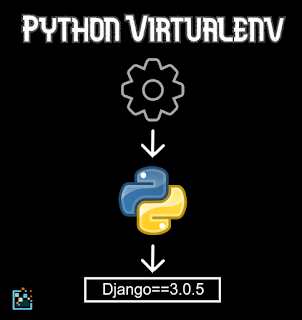Introduction to Creating Web Apps by using Python-Django Framework
About the Author
Hello Everyone! Welcome to the Django Series of Website Development on The Coding Cloud. My Name is Pawan Kumar and I am Pursuing B.Tech in Computer Science Engineering at Baba Farid College of Engineering and Technology. I have 1 Year Experience Working with Django and I have Worked on Several Projects. The Main Motive behind Starting this Series is to help You All Learn Django and Improve My Skills as I Will also have to Discover More for You People to Learn, as they say Learning by Teaching. This Series will be a Project based Learning because even I get bored of Only Theory as Hands on Practice Matters the Most. So, I Will be Your Instructor throughout the Series and If You have any Query, Suggestion, Feedback or You Feel any Scope of Improvement, You can Comment below and I Would Love to hear from You All.
What is Django
Django is a Powerful Python Web Framework which is Easy to Learn and handles most of the things Like Security, Backend all by itself without having to Worry about it. You can easily build Simple, Clean, Secure and Beautiful Web Apps in a Short Time. Django can not only build Simple and Small Web Apps but it can also be used to build Robust and Large Scale Web Applications with Complex Requirements and Integrations as it is easily Scalable. This is the reason Why beginners and experts both Love Django and You are going to Love it too.
In this Series You are going to Learn how to build Complete Django Projects With both frontend and backend Included. If you haven't installed Django yet, We Will do that in the Upcoming Posts When We Will Setup Our Environment to Work With Django.
Why Learn Django
In this Modern World of Technology, You may think that What's the benefit of Learning a 17-Year Old Application Work? Well, You Will Get Answers to All Your Questions Here :-
- Django is Mature
- Django is Python
- Django is Proven
Django is Mature
Some People Might not even Know that Django was Started in 2003 and it's a 17-Year Old Web Framework. So, that means it has already dealt with the Common Edge Cases. Improving the Framework bit by bit, It's Maintainers have already dealt with the Most Common and Most Hidden Security Flaws and have Maintained it Free from Major Bugs. It's Individual Community has Grown very Large Which Keeps Contributing to it. It's Maintainers have already Automated the Most of the Tasks which Means that You just need to Start Working on a Project and You Will be ready to launch Your Web App as soon as You Finish Testing it Which Saves alot of Time and Gets You Ahead of Your Competitors.
Django is Python
Python is a Worldwide Popular Programing Language and is Still #1 for Data Science. Python is Easy to Learn and Powerful in Execution. It has a Huge Community of Users as well as Contributors All Over the World and Hundreds of Thousands of Libraries like Pandas, Numpy, Scikit and Of Course Django. Python can be used Anywhere in Any Field and Django Really means to Make Python a Universal Language.
Django is Proven
Neither a Person nor a Tool Remains Popular as long as Django Until it Proves itself. Because of these, Startups around the World Rely on Django building their Dream Web Apps and Saving alot of Efforts Managing and Presenting their Data Including Tech Giants Like Instagram. Instagram uses Django as Backend and In the Year 2010 itself, Data of 5 Million users was Managed by Django. Today, Django is being used Everywhere and You Should Learn it too. Most of the Web Development Internships at Internshala Demands for Django Developers.
Assume Django Like a Pizza, No Matter Where You Go on this Planet, You Will Always Find Pizza - Roy Greenfield
Now that We Know Why to Learn Django, Let's Get Started. We are Going to Work With the Latest Version of Python and Django i.e. Python3.8 and Django3.x. In the Upcoming Posts, We are Going to Setup our Working Environment. Here is the List of What We are Going to do :-
- Install Django in Our PC
- Setup a Virtual Environment so that No Matter How Many Updates or Changes are there in Python or Django, Our App Will Work With the environment We Setup
- Install Visual Studio Code Editor by Microsoft
- PostreSQL for Database which is the Largest Open Source Database
Pre-Requisites
Basic Knowledge of Python and HTML + CSS Would Work. A lot of Patience, a Working Internet Connection and a PC With Minimum of 1GB RAM and 2-3GB free Space in the Hard Disk. Rest of All We Will Learn Here itself on The Coding Cloud.
If You Liked the Post, Share it With Your Friends or Colleagues and Comment Below If You have Any Suggestions for Us or If You Want to Give Any Feedback. I am also Open for Any Kind of Discussion on Django. See You Soon in the Upcoming Posts and I Must Say that You have been a Great Audience.




Comments
Post a Comment